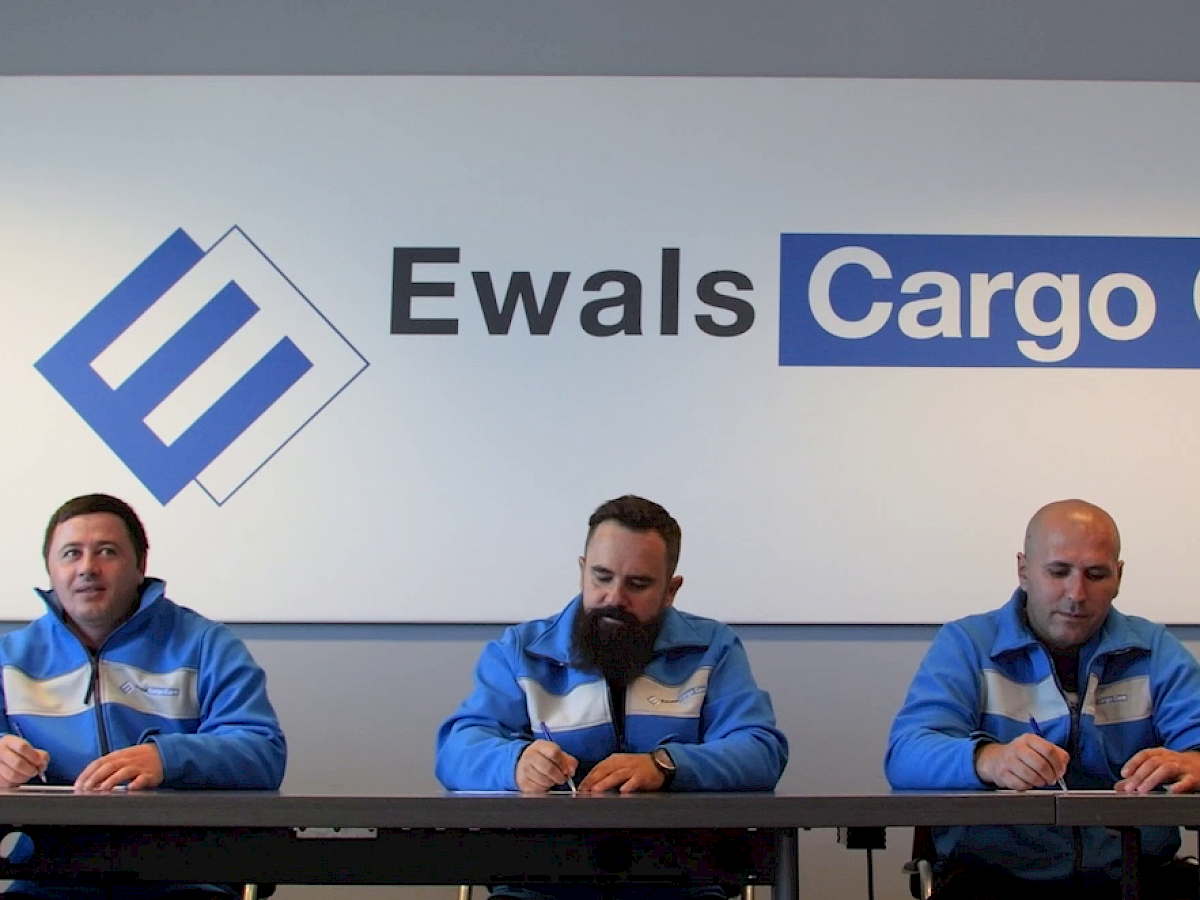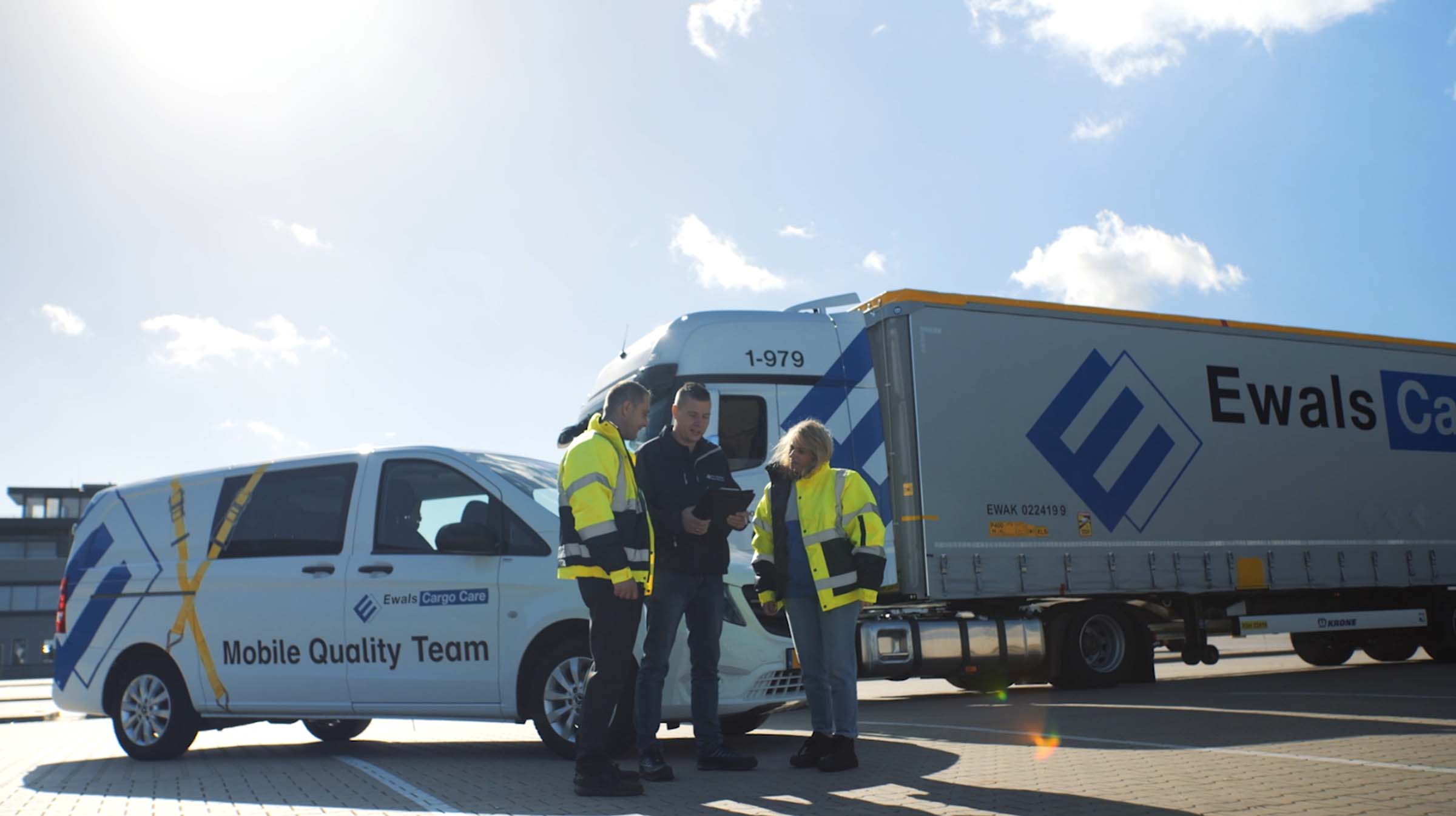The 6 necessary elements of driver training

Our approach driver training
Being a professional driver is already a complex and responsible task. Being a driver within the multimodal network, you need even more skills. There is no room for safety hazards when securing cargo for rail transport which goes 140 km/h, or on a deck of ship shipment where the trailer angle is up to 45 degrees. This is why Ewals has a unique approach to driver training, designed to ensure that all drivers are adequately trained in using the company's patented equipment up to the highest safety standards. The training program consists of six elements that blend theoretical and practical knowledge. By following these six steps, Ewals ensures that all its drivers are adequately trained and knowledgeable about the company's equipment and procedures. This helps to create a safe and efficient work environment for everyone involved. Jeannette Jansen, Manager of Ewals Academy, explains our approach to driver learning.
We think working for Ewals Cargo Care as a driver is a specific and responsible profession. Being an Ewals driver and a part of a logistical chain, you are an important representation in contact with customers, and you need to work with patented equipment and prepare trailers and cargo for multimodal transport. This is why we believe in extra training of 6 elements. All elements alone provide value, so the result, not the order, matters.- Jeannette Jansen, Manager Ewals Academy
Lesson 1: Hit the books with Ewals trailer manual
To be a successful driver for Ewals, it is essential to have theoretical knowledge about the company, its equipment, and the multimodal logistical concept. Therefore, the first element in the program is the manual, which contains written instructions on all of the procedures and policies that drivers need to know. This includes information on health and safety and how to use the company's unique equipment and the procedures to work accordingly.
Lesson 2: A picture is worth 1000 words in the driver instruction videos
In addition to the manual, the written content is also translated into audio material. The driver instruction videos provide audio explanations of various procedures. An example can be a video of coupling the trailer. These videos can be accessed by scanning the QR codes found in the manual, our driver app, YouTube or via the e-learning platform of Ewals Academy.
Lesson 3: Give it a try during the live training
At this stage, live training is available for drivers to practice what they have learned in a real-world setting. This allows them to get a feel for how the equipment works and how to perform each procedure correctly.

Lesson 4: Find out what you have learned with the driver knowledge test
The driver training program's fourth element is the driver knowledge test. The purpose of this test is to assess the driver's obtained knowledge and skills. This is done by presenting them with situations and asking how they will respond. The tests can be done via the learning platform anywhere – at home with a laptop or on the go with a phone. To pass, drivers must think carefully about their answers and present a well-thought-out solution to each problem presented in the test. This shows that they have memorized information and understand how to apply it.
Lesson 5: It takes one to know one
Depending on the experience and the agreements, it is possible to have an experienced mentor driver riding along for at least the first two weeks on the job. This step allows new drivers to ask questions and get real-time feedback and more confidence in their performance.

Lesson 6: Live and learn in the follow-up
Ewals Cargo Care is committed to maintaining high-quality standards through continuous learning and follow-up. The annual review of the driver’s knowledge test is one way we test our drivers' skills and knowledge. Furthermore, our auditors regularly inspect Ewals Cargo Care and subcontractor drivers in train and harbor terminals, following the same criteria as the mentor driver who coached you before. In addition, individual audits called QIV’s (Quality Improvement Visits) focus on individual subcontractors. Finally, to provide additional onsite support for drivers and implement proposals for continuous improvements, our Mobile Quality Team is part of our Fleet Control Department.
